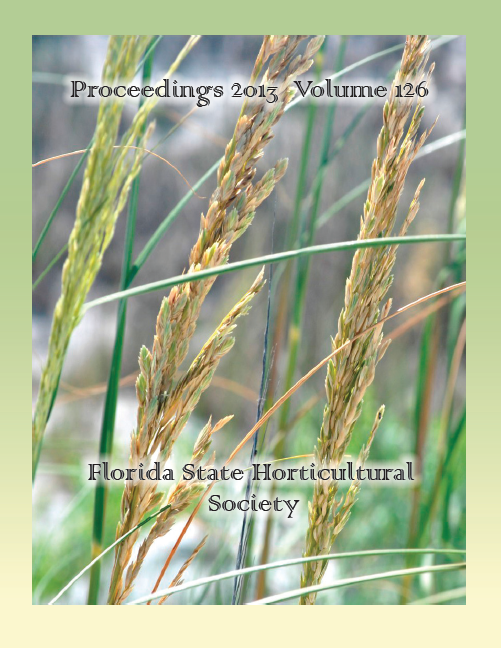The Effect of Nitrogen on Population Dynamics of the Chilli Thrips, Scirtothrips dorsalis (Thysanoptera: Thripidae), on Hydroponically Grown Jalapeño Pepper (Capsicum annuum)
Abstract
Chilli thrips, Scirtothrips dorsalisHood (Thysanoptera: Thripidae) is an economic pest of fruit, ornamental, and vegetable crops. The present study addresses the effects of nitrogen (N) fertilization on the population dynamics of chilli thrips on Jalapeño peppers (Capsicum annuum) that were grown in a hydroponic system with different concentrations of N. We experimented with five concentrations of hydroponic fertilizer (2%, 4%, 5.5%, 7%, and 8.5%) that were given to Jalapeno peppers by fertigation, with N being the independent variable while concentrations of potassium and phosphorus were held constant. A 4% N concentration was found to be the most favorable since it resulted in the fewest chilli thrips per leaf (0.86), produced the highest mean number of marketable fruit per plant (9.75), and produced the largest average fruit size per plant (85.76 g). Increasing concentrations of N did not increase fruit yields. For each N concentration, the lowest third of the pepper plant was found to have the highest mean number of chilli thrips per leaf. This study will help pepper growers manage populations of the chilli thrips, a major economic pest, by altering N fertilizer concentrations to optimum levels. This study will also help to determine the ideal on-plant level scouting area for growers to expeditiously find chilli thrips on pepper plants. This research study has significant potential in developing an integrated management program against chilli thrips in fruit, ornamental, and vegetable crops.

